Second Lockdown Underway. Fines Increased to £10,000
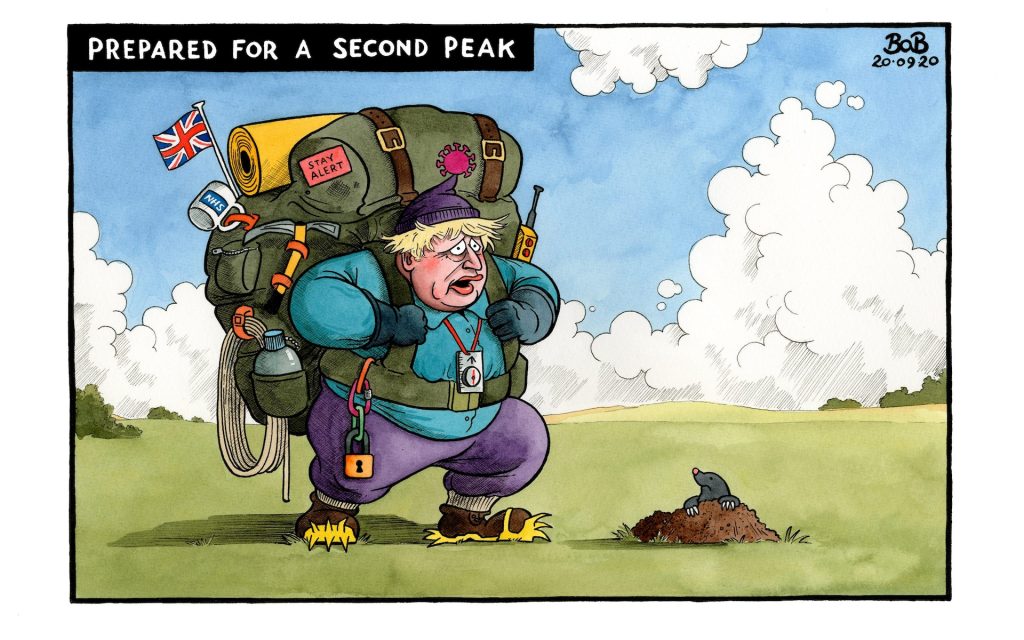
Will the madness never end? From September 22nd, areas across the North of England and the Midlands will see additional restrictions imposed. People won’t be allowed to socialise with anyone outside their households, cafes, pubs and restaurants will be restricted to table service only and, in some areas, restaurants, pubs and cinemas will be forced to close at 10pm. The Telegraph has more.
Local lockdowns are being put into place across England in a bid to stop a second wave of coronavirus, on top of the ‘rule of six’ that applies nationwide.
The Government imposed new restrictions on the areas of Merseyside, Warrington, Halton and Lancashire on Friday, September 18.
Similar restrictions were also announced for Wolverhampton and Oadby & Wigston in the Midlands, along with the areas of Bradford, Kirklees and Calderdale in West Yorkshire.
From Tuesday, September 22 onwards, residents in these areas will no longer be allowed to socialise with other people outside of their own households or their support bubble in private homes and gardens.
Hospitality for food and drink will be restricted to table service only and restaurants, pubs, and cinemas are required to close between 10pm and 5am.
Birmingham, Greater Manchester, Bolton and parts of the North East are also among the areas under local lockdown.
The Government claims these additional restrictions are necessary because of the rising number of cases in these areas – Sunderland now has an incidence rate of 103 per 100,000, while South Tyneside, Gateshead and Newcastle have a rate of 70. But, of course, 91% of these “cases” are likely to be false positives and of the remaining 9%, more than half won’t be infectious. (See yesterday’s post on Matt Hancock’s poor failure to understand the false positive rate for chapter and verse). The Telegraph has a comprehensive breakdown of what restrictions apply in your area.
Meanwhile, the Sunday Times reports that people who fail to self-isolate will face fines of £10,000.
The Government is set to introduce fines of up to £10,000 for people who breach self-isolation rules as Britain steps up preparations for a second wave of COVID-19.
People on low incomes will be paid £500 to self-isolate at home in a “carrot and stick” approach to slow the spread of the coronavirus.
The fines for breaching self-isolation rules will start at £1,000 – in line with the penalty for breaking quarantine after international travel – but could increase to £10,000 for repeat offences.
Daily infections rose to a four-month high of 4,422 yesterday, and Boris Johnson is expected to make a television address to the nation on Tuesday to announce a further tightening of restrictions on ordinary life.
According to the Sunday Times, Boris is due to announce further nationwide restrictions in a televised address on Tuesday, with the only undecided thing being the extent to which they’ll apply to businesses. Hospitality industry leaders have warned the Government that the sector is on the verge of crisis, with almost a million jobs at risk.
Pub chains are calling on the chancellor to maintain his furlough scheme, which is due to run out at the end of October; extend the cut in VAT well into next year; and slash beer duty.
Some 900,000 workers in the hospitality sector are still on furlough, with many expected to lose their jobs next month.
Tim Martin, the boss of JD Wetherspoon, which employs 43,000 people in its pubs and hotels, said many smaller venues had perished after the first lockdown. He said further restrictions would be “even more devastating”.
And, of course, Rasputin is in the wings, urging the Prime Minister on to even greater heights of destruction. Disgraced ex-SAGE member Neil Ferguson popped up on the radio yesterday to warn Boris that if he doesn’t order a severe second lockdown immediately people will die.
“If we leave it another two to four weeks we will be back at levels we were seeing more like mid-March. That’s clearly going to cause deaths because people will be hospitalised,” he told the BBC’s Today programme.
As George Santayana said, those who cannot learn from the mistakes of the past are doomed to repeat them.
Lies, Damned Lies and Health Statistics

I’m publishing an original piece today by Dr Mike Yeadon, one of the co-authors of the paper I published on September 9th about why a second wave was unlikely. As he says in this article, when he wrote that earlier paper he hadn’t quite grasped the full implications of the PCR test’s false positive rate (FPR), nor how unwilling Matt Hancock is to get to grips with the problem. When Mike appeared on Julia Hartley-Brewer’s show on September 11th he urged her to ask the Heath Secretary what the FPR of the PCR is – and he reiterated this when he appeared again on September 16th. But it was only when he heard Matt Hancock’s reply to that question – asked by Julia on September 17th – that he was moved to write this piece. He is angry, to put it mildly – and anger isn’t an emotion he’s used to feeling as a dispassionate research scientist.
Here’s an extract.
Allow me to explain the impact of a false positive rate of 0.8% on Pillar 2. We return to our 10,000 people who’ve volunteered to get tested, and the expected ten with virus (0.1% prevalence or 1:1000) have been identified by the PCR test. But now we’ve to calculate how many false positives are to accompanying them. The shocking answer is 80. 80 is 0.8% of 10,000. That’s how many false positives you’d get every time you were to use a Pillar 2 test on a group of that size.
The effect of this is, in this example, where 10,000 people have been tested in Pillar 2, could be summarised in a headline like this: “90 new cases were identified today” (10 real positive cases and 80 false positives). But we know this is wildly incorrect. Unknown to the poor technician, there were in this example, only 10 real cases. 80 did not even have a piece of viral RNA in their sample. They are really false positives.
I’m going to explain how bad this is another way, back to diagnostics. If you’d submitted to a test and it was positive, you’d expect the doctor to tell you that you had a disease, whatever it was testing for. Usually, though, they’ll answer a slightly different question: “If the patient is positive in this test, what is the probability they have the disease?” Typically, for a good diagnostic test, the doctor will be able to say something like 95% and you and they can live with that. You might take a different, confirmatory test, if the result was very serious, like cancer. But in our Pillar 2 example, what is the probability a person testing positive in Pillar 2 actually has COVID-19? The awful answer is 11% (10 divided by 80 + 10). The test exaggerates the number of covid-19 cases by almost ten-fold (90 divided by 10). Scared yet? That daily picture they show you, with the ‘cases’ climbing up on the right-hand side? Its horribly exaggerated. Its not a mistake, as I shall show.
Earlier in the summer, the ONS showed the virus prevalence was a little lower, 1 in 2000 or 0.05%. That doesn’t sound much of a difference, but it is. Now the Pillar 2 test will find half as many real cases from our notional 10,000 volunteers, so 5 real cases. But the flaw in the test means it will still find 80 false positives (0.8% of 10,000). So its even worse. The headline would be “85 new cases identified today”. But now the probability a person testing positive has the virus is an absurdly low 6% (5 divided by 80 + 5). Earlier in the summer, this same test exaggerated the number of COVID-19 cases by 17-fold (85 divided by 5). Its so easy to generate an apparently large epidemic this way. Just ignore the problem of false positives. Pretend its zero. But it is never zero.
This test is fatally flawed and MUST immediately be withdrawn and never used again in this setting unless shown to be fixed. The examples I gave are very close to what is actually happening every day as you read this.
This piece is a blockbuster. Very much worth reading in full.
Hancock Claims Hospital Admissions for Covid Doubling Every Eight Days. Really?
As an addendum to Mike’s piece, I want to draw attention to something else Matt Hancock said when he was interviewed by Julia Hartley-Brewer on Thursday. He told her we were facing a moment of national crisis because of the exponential rise in hospital admissions for COVID-19.
“Unfortunately, the number of people in hospital has doubled every eight days in the last few weeks,” he said.
Really, Secretary of State?
If you go to the Government’s COVID-19 dashboard and look at the data for daily Covid admissions to English hospitals (see below), it increased from 143 to 199 in the eight-day period to September 17th, the day Hancock was speaking. That’s not “doubling”. What about daily admissions for the whole of the UK? It increased from 196 on Sept 10th to 241 on Sept 17th. Again, not “doubling”.
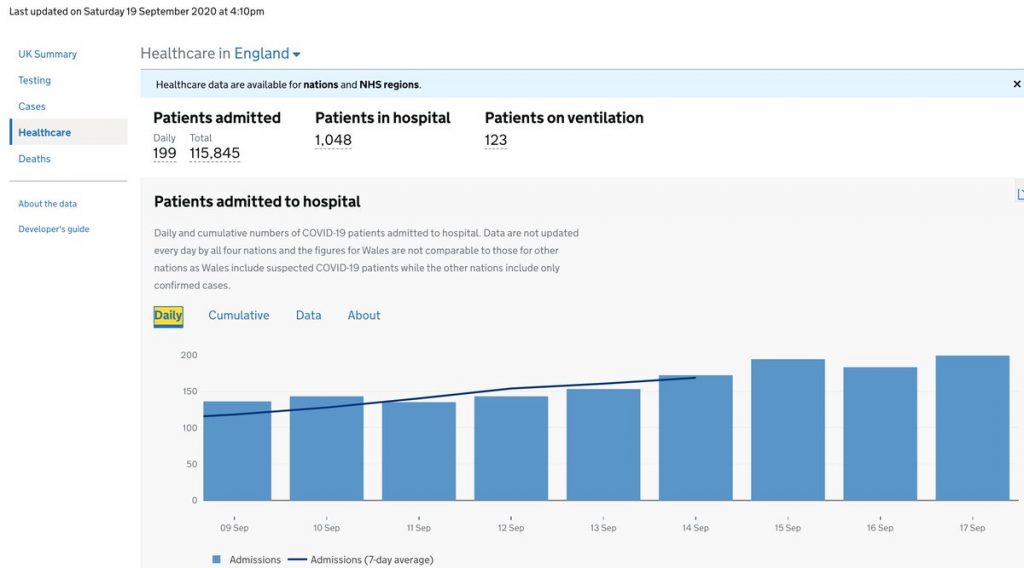
What about the last few weeks? Let’s go back 32 days from September 17th (4 x 8), which takes us to August 17th. There were 46 Covid admissions to English hospitals that day, according to the dashboard. If that figure doubled every eight days in the period leading up to September 17th, it would have reached 96 at the end of the first eight days, 184 at the end of the second, 368 at the end of the third and 736 at the end of the fourth. In fact, the number on the 17th was 199.
Ditto for the whole of the UK. On August 17th, that number was 96. If that doubled every eight days, the total on September 17th would have been 1,536. In fact, it was 241.
Either Matt Hancock is looking at different data to that on the Government’s COVID-19 dashboard, or…
Stop Press: This tweet from The Real Normal Podcast neatly explains the point I made yesterday in my blog post the other misleading thing Matt Hancock said on Julie Hartley-Brewer’s programme.
Belgian Doctors Against Lockdown
A group of Belgian doctors have written an open letter to their Government arguing there is no medical justification for any further Covid restrictions – the medical evidence just doesn’t support them. This is the latest anti-lockdown broadside by a group of doctors, with similar groups in America, Germany and Australia. Dr Malcolm Kendrick and I are working on a UK version. More news on that soon.
We, Belgian doctors and health professionals, wish to express our serious concern about the evolution of the situation in the recent months surrounding the outbreak of the SARS-CoV-2 virus. We call on politicians to be independently and critically informed in the decision-making process and in the compulsory implementation of corona-measures. We ask for an open debate, where all experts are represented without any form of censorship. After the initial panic surrounding COVID-19, the objective facts now show a completely different picture – there is no medical justification for any emergency policy anymore.
The current crisis management has become totally disproportionate and causes more damage than it does any good.
We call for an end to all measures and ask for an immediate restoration of our normal democratic governance and legal structures and of all our civil liberties.
The list of signatories is impressive. Worth reading in full.
Police Baton Charge Anti-Lockdown Protestors
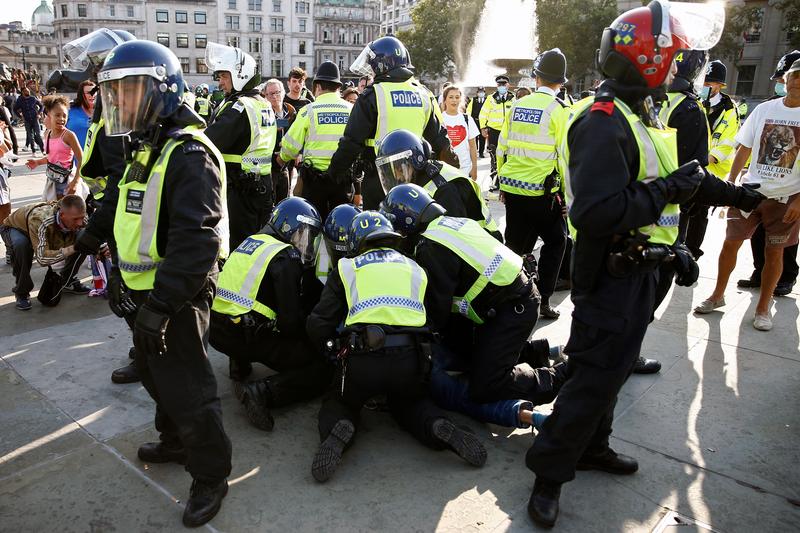
Riot Police launched a completely unnecessary baton charge against a group of anti-lockdown protestors in Trafalgar Square yesterday. Breitbart has more.
Scuffles broke out Saturday as police moved in to disperse hundreds of demonstrators who gathered in London’s central Trafalgar Square. Some protesters formed blockades to stop officers from making arrests, and traffic was brought to a halt in the busy area.
The ‘Resist and Act for Freedom’ rally saw dozens of people holding banners and placards such as one reading “This is now Tyranny” and chanting “Freedom!” Police said there were “pockets of hostility and outbreaks of violence towards officers”.
“Outbreaks of violence”? Interesting contrast there with the way the BBC described the infamous BLM riot on June 7th: “27 police officers injured during largely peaceful anti-racism protests in London.”
So let me get this straight. When large groups of protestors gather in Central London to proclaim their allegiance with a Neo-Marxist group that wants to defund the police, end the nuclear family and dismantle capitalism, the police fall to one knee to show their respect. But when a small group of protestors gather in Central London to protest about the suspension of our civil liberties, the police baton charge them.
We’re going to have to start calling the Prime Minister Boris Jons-Un.
Are Schools Allowed to Punish Children for Making Covid Jokes?
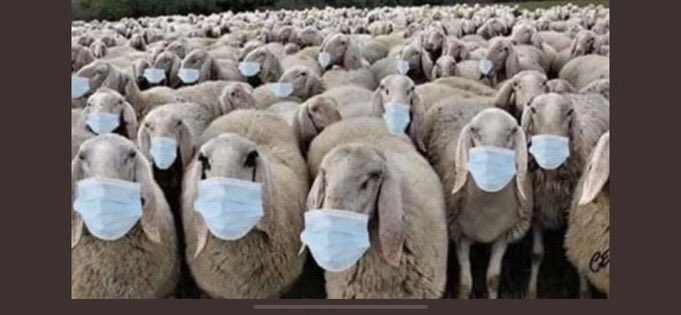
Readers will recall a story in the Independent on August 31st saying that a school had threatened to send its pupils home for “inappropriate Covid humour”.
The Ark Alexandra Academy in Hastings, east Sussex, set out a list of coronavirus “red lines” that will result in fixed-term exclusions for pupils breaching them.
The academy says “humorous, inappropriate comments or statements” related to Covid-19 and “purposeful physical contact with any other person” are off-limits and will risk the child being sent home.
But is that allowed? Or could a parent whose child finds themselves on the naughty step for, say, sharing the above meme, complain to Ofsted?
At the Free Speech Union, we asked one of the members of our Legal Advisory Council who’s an expert on education law to look into it for us. You can read his full note here, but this was his conclusion:
It is reasonable to argue that joking has wellbeing benefits, as a normal part of social interaction – joking is a healthy coping mechanism. If preventing everyday humour is likely to create rather than prevent stress, then the policy is self-defeating. And placing a child in isolation for making a benign joke seems particularly harsh, given that many children will have spent the last six months in a form of isolation and may have a need for social contact.
Worth reading in full.
Sir Graham Brady Leads Rebellion Against Renewal of Coronavirus Act
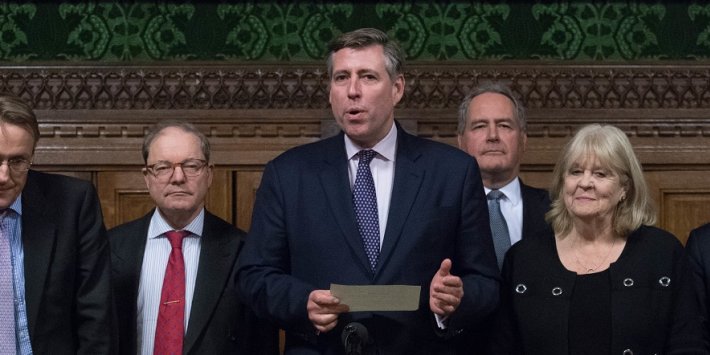
Sceptical Conservative MP and Chairman of the 1922 Committee Sir Graham Brady is leading a rebellion against the Government. The Sunday Telegraph has more.
Senior Tories are planning to stop Prime Minister Boris Johnson imposing limits on people’s freedoms without scrutiny by forcing Parliament to have the final say on new lockdown measures, the Telegraph can reveal.
MPs vote next week on “the renewal of temporary provisions” of lockdown measures under the Coronavirus Act 2020 to reauthorise the Government’s use of the powers.
Sir Graham Brady, the Chairman of the 1922 Committee of backbench Conservative MPs, is planning to use this opportunity to amend this legislation to require ministers to put all new measures to a vote of MPs first.
The move will effectively impose a “Parliamentary lock” on any future restrictions, amid widespread fury among senior MPs and peers that restrictions have been imposed on Britons without a vote.
Sir Graham said: “In March, Parliament gave the Government sweeping emergency powers at a time when Parliament was about to go into recess and there was realistic concern that NHS care capacity might be overwhelmed by COVID-19.
“We now know that the NHS coped well with the challenge of the virus and Parliament has been sitting largely since April. There is now no justification for ministers ruling by emergency powers without reference to normal democratic processes.
“It is essential that going forward all of these massively important decisions for family life, and affecting people’s jobs and businesses should be exercised with proper supervision and control.”
This move follows widespread anger among backbench MPs on all sides of the House – as well as the Speaker – that Matt Hancock introduced the “Rule of Six” via a last-minute Statutory Instrument, leaving no time for a debate about the new restrictions in Parliament.
If the Prime Minister suffers a series of defeats in the House of Commons over the Government’s handling of the Coronavirus crisis, it’s the beginning of the end for him, surely?
A Philosopher’s Reflections on the Second Wave
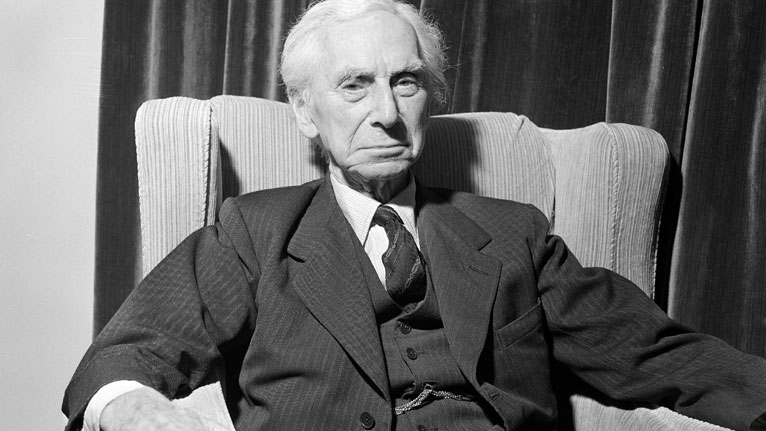
A Professor of Philosophy at a Russell Group university has sent us some interesting thoughts about the second wave – from a philosophical point of view. They were prompted by listening to Neil Ferguson on the Today programme yesterday morning.
Throughout the UK, it is now fashionable to proclaim – with an air of authority and alarm – that “the second wave is here!” or, alternatively, “the second wave is coming!” But how should those of us who are not yet convinced by such claims respond to them? Proponents of the orthodox COVID-19 narrative sometimes display a curious reluctance to contemplate alternative possibilities or engage in critical debate. Three intellectual shortcomings, which I will describe in what follows, play key roles in facilitating this imperviousness to critique. When trying to understand, evaluate, and critically engage with talk of the “second wave”, it is helpful to keep these shortcomings in mind.
Make your claims unfalsifiable
Consider, for example, the claim that lockdowns and other measures “push down the curve” of infections. If the infection rate falls after some measure is introduced, causation is prematurely inferred from correlation: two things happened at around the same time and so one of them caused the other. However, if infections instead continue to rise, it is maintained that they would have risen even further had this measure not been introduced. And, if comparisons with other countries prove problematic, it is asserted that the relevant populations behave in different ways and what has worked elsewhere would not have worked here. The same pattern of reasoning is used to justify the introduction and continuing use of non-medical facemasks by the general public. Comparisons with other countries are endorsed only when it suits. Furthermore, little indication is provided of what could even count as evidence against their ongoing use. When it comes to second peaks, a popular approach is to be non-specific about the nature and timing of what is predicted to happen. If you don’t make clear what will happen or when, you can keep announcing that “the second peak is coming” for as long as you like, without risk of falsification.
Identify your preferred intervention with moral virtue
The challenging tasks of evaluating evidence and reaching conclusions via rational debate can both be avoided by instead identifying the endorsement of a particular measure with the possession of moral virtue. This is most visible in the case of facemasks: the masked face becomes the embodiment of caring for others. To wear the mask is to care, while to question the practice is to be selfish and uncaring. By immersing oneself in a performance where “mask = morally good” and “no mask = morally bad”, one can circumvent the issue of what one ought to believe on the basis of available evidence. The “epistemic ought” is replaced with a table-thumping “moral ought” that silences dissent. A similar move is also used in second-peak talk. The second peak is coming because some people, especially young people, behaved in morally irresponsible ways (by going out and having some fun over the summer). They failed to follow the Covidian doctrine of abstinence and now we are all being punished for their sins. When social restrictions are presented as an integral part of a situation brought about by others’ immoral conduct, attention is diverted from the question of whether or not those restrictions are actually appropriate.
Say things that are vague or meaningless
There is a difference between a claim that is meaningful, but impervious to counter-evidence, and a claim that is unfalsifiable because it is either far too vague or outright meaningless. For instance, it means something to say that “lockdowns push down the curve of infections”. However, suppose one asserts simply that “lockdowns work”. If success-conditions (specifying what it is for something to work or not work in this context) have not been made clear, then we cannot determine whether the claim is true or false, as we don’t even know which states of affairs would make it true or false.
Second-wave talk is especially prone to vagueness, to the point where it is frequently unclear what – if anything – is being said. Hence, although a sceptic might be inclined to start by questioning the truth of certain claims, that would be premature. First of all, we need to figure out what, if anything, is meant by those claims. By way of analogy, suppose I say that a Wibbly-wobbly is coming to get me. When you ask what it will do, I say that I don’t have a clue. When you ask what a Wibbly-wobbly is, what it looks like, and how it behaves, I say that I have no idea. By then, it would be reasonable to suspect that my utterance is not just questionable, but meaningless. To avoid mistaking a similarly empty claim about second waves for a debatable position, we can start by asking questions like these:
Is a second wave defined in terms of recorded cases, hospitalizations, fatalities, or some combination of the three? Where tests are concerned, is the presence or absence of a second wave determined by the number or positive test results, the percentage of positive results, or by a more sophisticated, multi-faceted analysis? What distinguishes a full-blown second wave from a smaller increase in cases that does not quite meet the criteria for wave-hood? How rapid must an increase be and how long must it last for in order to count as a second wave? If a wave happens in one part of the country and then a wave happens in another part of the country, is the latter a second wave? If the crest of an initial wave is lowered by social restrictions, which are then lifted, is what happens afterwards a second wave or a continuation of the first wave?
Vague and sometimes conflicting references to “the second wave” are to be found wherever we look. How many times have we been told that the second wave is here and then, shortly afterwards, that the second wave is coming (or vice versa)? Unless the term is being used in two different ways, we cannot have both. And consider the Prime Minister’s recent announcement that “the UK is now seeing a second wave”, that we knew this was coming, and that we are about six weeks behind Spain and France. If the comparison with Spain and France is to be endorsed, then this cannot be the “autumn wave” that others are talking about, where the latter is conceived of in terms of a seasonal pattern that is well-established in other respiratory viruses. The daily counts of positive PCR test results in France and Spain started rising during July, not with the onset of autumn. The difference is a potentially important one, which has a bearing on determining the appropriate response. If the alleged “second wave” is better thought of as a continuation of the first wave, then serious consideration should be given to the possibility that we are in fact very close to the place at which Sweden has already arrived. What is needed is careful attention to the evidence and the encouragement of critical discussion that welcomes disagreement as a path to truth, not vague, sloppy talk that invokes a sense of impending doom.
Anyone who says that the second wave is either here or about to hit, but cannot offer adequate responses to questions concerning what a second wave actually consists in, is being insufficiently clear. And anyone who dismisses such questions altogether or displays indifference to them probably isn’t saying anything meaningful. To assert “it’s the second wave!”, while providing no criteria for distinguishing between “a second wave” and “not a second wave” is to assert nothing. I am reminded of a quote from Macbeth: “It is a tale told by an idiot, full of sound and fury, signifying nothing”. Nevertheless, like certain emotional performances, it can still serve to evoke, sustain, and heighten fear in others.
Critic Subscription Offer
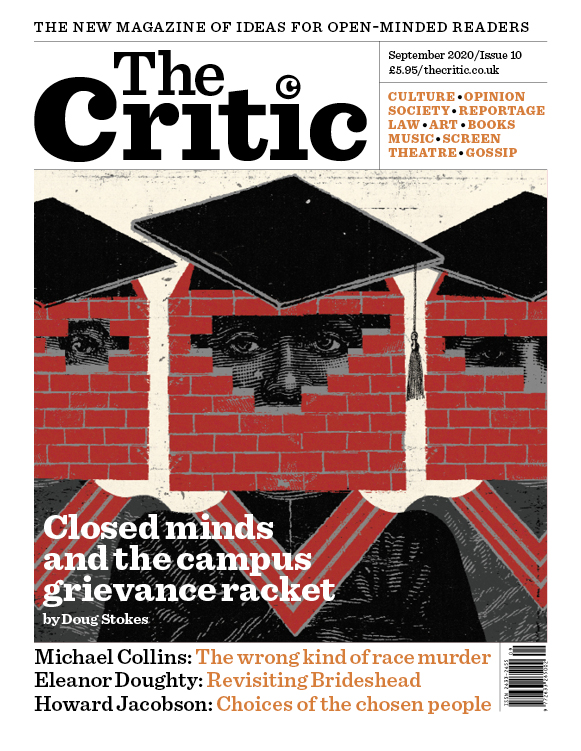
Michael Mosbacher, the Publisher and Co-Editor of the Critic, a magazine that’s been very critical of the Government’s handling of the crisis since the beginning, has come up with a special subscription offer for readers of Lockdown Sceptics.
The Critic is delighted to offer Lockdown Sceptics‘ readers a year’s subscription to Britain’s new magazine of ideas for open-minded readers – for £20, less than half price. Just click here to take advantage of this offer.
The Critic was at the forefront of questioning the rationale for the lockdown and will continue to do so – with contributions robustly challenging the Government’s approach by Toby Young, Alistair Haimes, Patrick Fagan, Laura Dodsworth and Christopher Snowdon. The Critic is willing to ask the questions that others find too difficult – or too dangerous – to ask. We take politics, culture and the arts seriously – but do not neglect antiques, food, fashion, gardening, and shooting.
Our regulars include Toby Young, Douglas Murray, Jonathan Meades, Daniel Johnson, Tibor Fischer, Lisa Hilton, Hannah Betts, Felipe Fernandez-Armesto and Titania McGrath and artists Adam Dant and Miriam Elia.
Subscribe to the Critic today and save over £20 on your first year’s subscription. We are confident you will enjoy it.
Round-Up
- “Where is the evidence for going back into lockdown?” – Dan Hannan asks a good question in his Telegraph column
- “Lockdown failed. We must follow the Swedish model and learn to live with Covid” – Mark Woolhouse adds his voice to the growing chorus of sceptics (at least, growing among Telegraph columnists)
- “The economic recovery is now pear-shaped, not V-shaped” – With a nationwide second lockdown looming, the economic recovery is disappearing like a mirage
- “Another blow to intellectual freedom” – Excellent piece in Spiked by Benjamin Schwarz about the University of Chicago’s English Faculty’s insistence that all undergraduates will have to take courses in “Black Studies”
- “How should I talk to neighbours who break the rules?” – A handy guide from the BBC about how to tell off rule-breakers
- “Temporal profile and determinants of viral shedding and of viral clearance confirmation on nasopharyngeal swabs from SARS-CoV-2-positive subjects: a population-based prospective cohort study in Reggio Emilia, Italy” – New BMJ Study finds viral clearance achieved at a median of 36 days from symptom onset. Other studies find people shed for up to 12 weeks. Yet most are infectious for <10 days, highlighting the fact that mass testing significantly overstates true positives.
- “The silent cost of the coronavirus: NHS cancer delays, cancelled operations and a bleak winter ahead” – Good piece by Christina Lamb in the Sunday Times documenting the catastrophic consequences of the NHS becoming a Covid-only service. Let’s do it all over again then, shall we?
- “THIRD of UK Covid victims in July and August ‘died from OTHER causes’ – including cancer or being hit by a car – Oxford University scientists reveal” – No, it’s not Carl Heneghan, but Jason Oke, a colleague of his at Oxford’s Centre for Evidence-Based Medicine
- “Second wave of Covid cases in Europe is not causing deaths to spike compared with the peak in spring” – More scepticism from the increasingly sceptical Daily Mail
- “This lifeless Parliament is betraying the animating principles of Brexit” – Janet Daley socks it to the Government in her latest Telegraph column
- “In defence of the Covid snitch” – Counter-intuitive – and funny – piece by my old mate Cosmo Landesman in the Spectator
- “Exeter University debating society is forced into humiliating U-turn after ‘disinviting’ Catholic author opposed to gay marriage – only to then re-invite her and call it ‘a mistake’” – The Mail on Sunday reports on the Free Speech Union’s triumph on Friday, reversing an attempt to no-platform a Catholic journalist
Theme Tunes Suggested by Readers
Just one today: “Another False Positive” by IamFleX.
Love in the Time of Covid
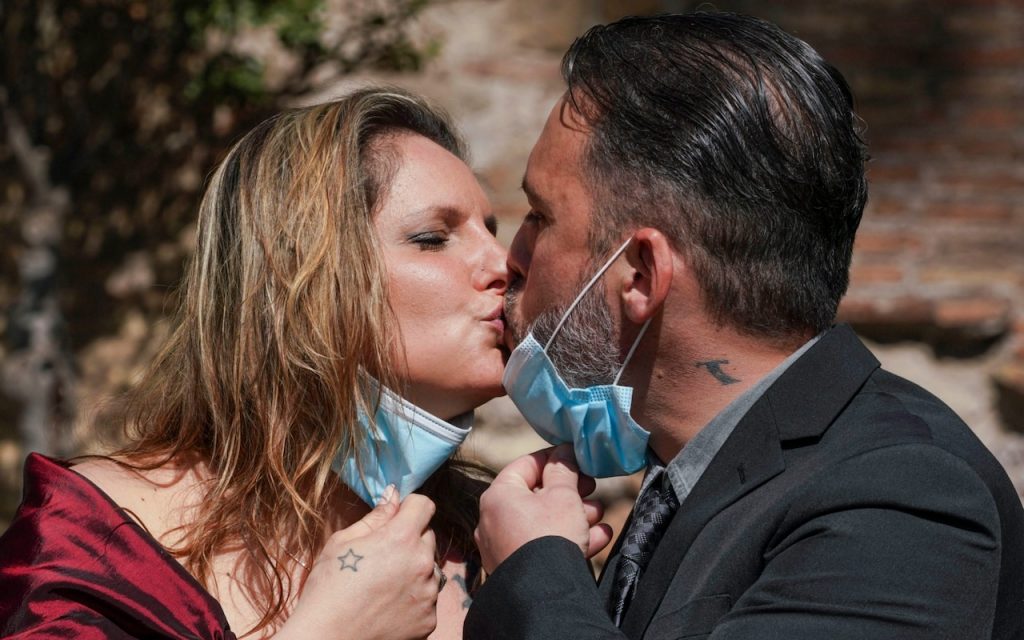
We have created some Lockdown Sceptics Forums, including a dating forum called “Love in a Covid Climate” that has attracted a bit of attention. We’ve also introduced a section where people can arrange to meet up for non-romantic purposes. We have a team of moderators in place to remove spam and deal with the trolls, but sometimes it takes a little while so please bear with us. You have to register to use the Forums, but that should just be a one-time thing. Any problems, email the Lockdown Sceptics webmaster Ian Rons here.
Woke Gobbledegook

We’ve decided to create a permanent slot down here for woke gobbledegook. But today, instead of giving you another example, I thought I’d flag up one of the risks of pumping out this virtue-signalling balls, particularly if your institution is the recipient of taxpayers’ money.
The US Education Department has opened an investigation into Princeton University after the President published an “open letter” in which he said racism was “embedded” in the institution. The New York Times has more.
The Trump administration said this week that it was investigating whether Princeton has violated federal civil rights law, suggesting that a public expression of contrition for a history of “systemic racism” at the university was an acknowledgment of illegal behavior.
“You admitted Princeton’s educational program is and for decades has been racist,” federal officials wrote in a letter to the school on Wednesday.
The investigation is the latest escalation in the administration’s campaign against the Ivy League for its policies on matters of race. Last month, the Justice Department accused Yale of violating federal civil rights law through its admissions policies, and it has supported legal efforts to end affirmative action at Harvard.
In their letter to Princeton this week, officials cited a public statement made this month by the school’s president, Christopher L. Eisgruber, in which he charged university leaders with developing plans “to combat systemic racism at Princeton and beyond.”
Invoking the protests and national reckoning that followed the killings of Black people by police officers this year, Mr. Eisgruber announced a series of policy initiatives to diversify Princeton’s faculty and make the campus more welcoming to underrepresented groups.
He said racism persists at Princeton and in society “sometimes by conscious intention, but more often through unexamined assumptions and stereotypes, ignorance or insensitivity, and the systemic legacy of past decisions and policies.”
In its letter informing Princeton of the investigation, which was earlier reported on Thursday by the Washington Examiner, the Education Department said that “based on its admitted racism,” Princeton may have received more than $75 million in taxpayer funding under false pretenses since Mr. Eisgruber became president in 2013.
This is a spectacular piece of trolling from the Troll King himself. I wonder if our Department for Education could be persuaded to carry out similar investigations of British universities who’ve issued pro forma BLM solidarity statements, lacerating themselves for being “systemically racist”?
“Mask Exempt” Lanyards
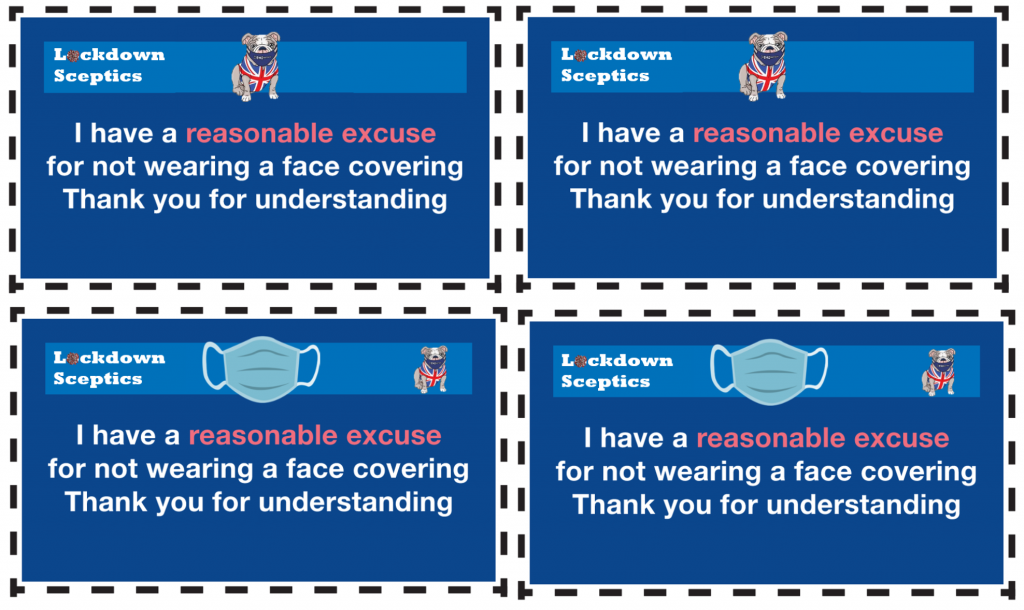
We’ve created a one-stop shop down here for people who want to buy (or make) a “Mask Exempt” lanyard/card. You can print out and laminate a fairly standard one for free here and it has the advantage of not explicitly claiming you have a disability. But if you have no qualms about that (or you are disabled), you can buy a lanyard from Amazon saying you do have a disability/medical exemption here (takes a while to arrive). The Government has instructions on how to download an official “Mask Exempt” notice to put on your phone here. You can get a “Hidden Disability” tag from ebay here and an “exempt” card with lanyard for just £1.99 from Etsy here. And, finally, if you feel obliged to wear a mask but want to signal your disapproval of having to do so, you can get a “sexy world” mask with the Swedish flag on it here.
Don’t forget to sign the petition on the UK Government’s petitions website calling for an end to mandatory face nappies in shops here.
A reader has started a website that contains some useful guidance about how you can claim legal exemption.
And here’s a round-up of the scientific evidence on the effectiveness of mask (threadbare at best).
The Care Home Scandal – A Call For Evidence
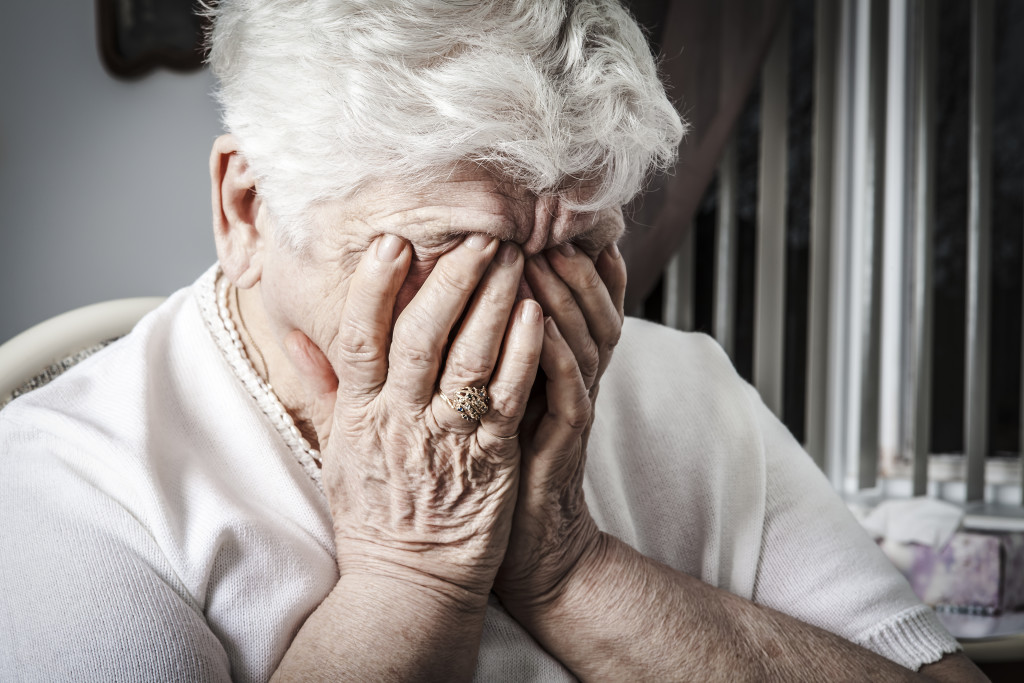
Lockdown Sceptics has asked an award-winning investigative journalist, David Rose, to investigate the high death toll in Britain’s care homes. Did 20,000+ elderly people really die of COVID-19 between March and July or were many of them just collateral lockdown damage? With lots of care homes short-staffed because employees were self-isolating at home, and with relatives and partners unable to visit to check up on their loved ones because of restrictions, how many elderly residents died of neglect, not Covid? How many succumbed to other conditions, untreated because they weren’t able to access hospitals or their local GP? After doctors were told by care home managers that the cause of death of a deceased resident was “novel coronavirus”, how many bothered to check before signing the death certificate? The risk of doctors misdiagnosing the cause of death is particularly high, given that various safeguards to minimise the risk of that happening were suspended in March.
David Rose would like Lockdown Sceptics readers to share any information they have that could help in this investigation. Here is his request:
We are receiving reports that some residents of care homes who died from causes other than Covid may have had their deaths ascribed to it – even though they never had the disease at all, and never tested positive. Readers will already be familiar with the pioneering work by Carl Heneghan and his colleagues at the Oxford Centre for Evidence Based Medicine, which forced the Government to change its death toll counting method. Previously, it will be recalled, people who died of, say, a road accident, were being counted as Covid deaths if they had tested positive at any time, perhaps months earlier. But here we are talking of something different – Covid “deaths” among people who never had the virus at all.
In one case, where a family is deciding whether to grant permission for Lockdown Sceptics to publicise it, an elderly lady in reasonable health was locked in her room for many hours each day in a care home on the south coast, refused all visitors, deprived of contact with other residents, and eventually went on hunger strike, refusing even to drink water. She died in the most wretched circumstances which were only indirectly a product of the virus – and yet, her death certificate reportedly claims she had Covid.
I’m looking for further examples of 1) elderly people who died as a result of the lockdown and associated measures, but whose deaths were wrongly attributed to “novel coronavirus”, and 2) those elderly people who clearly died from other causes but whose deaths were still formally ascribed to Covid because they once tested positive for it, even after the counting method change.
If you have relevant information, please email Lockdown Sceptics or David directly on david@davidroseuk.com.
Shameless Begging Bit
Thanks as always to those of you who made a donation in the past 24 hours to pay for the upkeep of this site. Doing these daily updates is hard work (although we have help from lots of people, mainly in the form of readers sending us stories and links). If you feel like donating, please click here. And if you want to flag up any stories or links we should include in future updates, email us here.
And Finally…
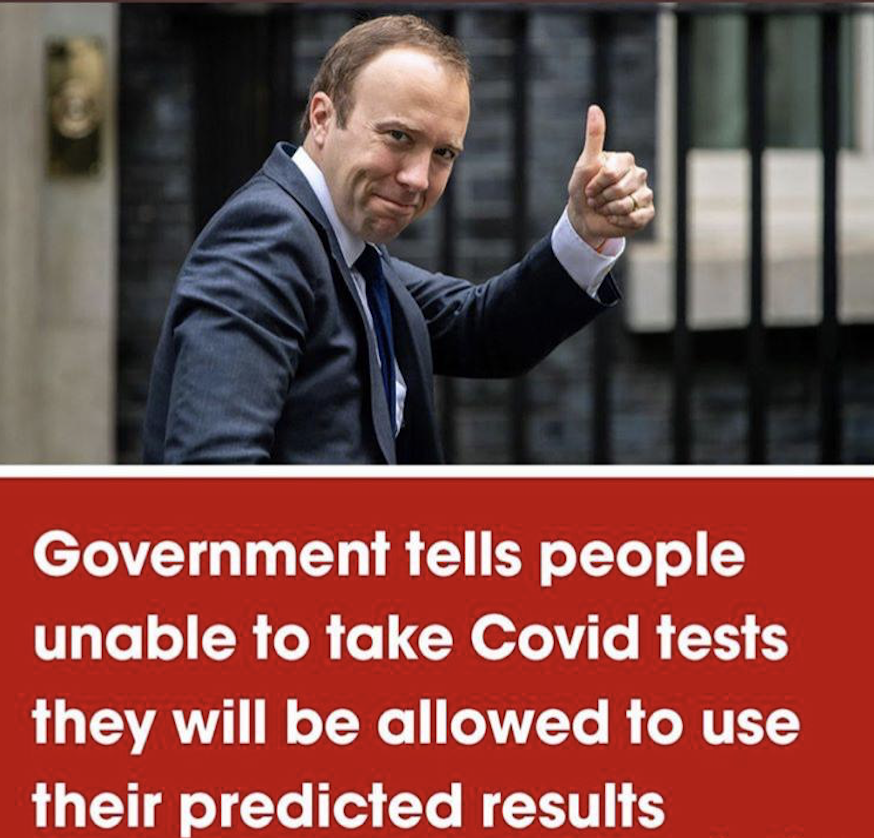

 (@RealNormalPod)
(@RealNormalPod) 












To join in with the discussion please make a donation to The Daily Sceptic.
Profanity and abuse will be removed and may lead to a permanent ban.
The distress signal may be a bit too subtle for many non-sailors!
Lost on this lubber, matey.
I thought you were dying, with your 100+ medical procedures per day?
The upside down Union Flag.
Point taken but here is a random Google for Union Flag, ie the flag is supposed to be the main point of interest not some background error.
Sounds like a bit of a face-saving apologia for shit-for-brains and elastic-for-spine Johnson and journalists like Nelson from an essentially Tory perspective. Nothing more.
A bit f.ing late to recant now!
They are both guilty of terrible, cowering, judgment.
No – it’s not ‘the scientists‘ : it’s that cabal of bad scientists given the loud hailer by Johnson’s government and Nelson’s media. Too late for apologies and excuses now.
As for Starmer’s opposition – it has, indeed been utterly pathetic – but the ratio of the minority of MPs on either side who have seen some sense is roughly proportionate. There is no winner in this competition of discredited politics and constitution..
The key word is Opposition. It is the duty of the Loyal Opposition to keep the worst excesses of HMG in check. Starmer has singularly failed in that duty.
One might surmise that Sir Forensic looks forward to inheriting a permanent state of temporary emergency, and exploiting the Politburo Powers to complete any odd quirks and remnants of the Revolution left unimplemented by then.
Totally agree. I have been an active Labour Party member for longer than I care to remember. I’ve tramped the streets, minuted countless tedious meetings and served as a local councillor. In short, I’ve put my money where my mouth is.
I am of that generation who has known those who actually put their lives on the line to oppose the extinguishing of humanity and democracy, and gave myself and others a start in life that they never had. The contrast with the present is hard to bear as fellow citizens metaphorically welcome the resurrected ghosts of Goebbels and Mengele.
I’m realistic about the messiness of the political process and what it entails. even when it was something as egregious as Blair. Personally, I was dubious about Corbyn as a leader – but recognized that, despite all the lying propaganda about him (foreshadowing the Covid assault), he represented an attempt to break away from the establishment’s slimy grip.
But now?
Like the entire political and constitutional picture, the Party is massively corrupted – a process which, indeed, started in the Blair years, whence we’ve ended up with a PLP that is largely beneath contempt in terms of its lack of grasp of fundamental democracy, basic integrity and intelligence. Starmer is an establishment placeman, slotted in as an alternative for when Johnson and the Tories eventually implode.
This constituency is narrowly held by Labour after some years of a LibDem MP. The ward is in LibDem hands. I profoundly dislike the hypocritical LibDems. But I shall not be supporting Labour any time soon, given the MP’s lazy incomprehension of the Covid issue, and the Party’s total irrelevance to the proper democratic process.
I don’t think I’m alone.
I’ve never found Fraser Nelson a convincing speaker. Complete mystery how he’s risen to be editor.
Another strange journalist is Freddie Gray who has yet to understand the nuances of American politics.
“ Scourge of the sceptics’ cause, the rock on which all our carefully crafted arguments founder. “
Very simple solution to that. We work collectively to move the polls by taking part in them.
Which is what the other side have done.
I haven’t been sent a yougov poll for some time now.
Anyone who favoured ‘a 3rd lockdown’ is no sceptic. We don’t need the Alexander Johnson of 2019 back – he is the one who has got us here in the first place. I would prefer the Hague or somewhere similar.
There has quite clearly been some form of globalist coup over the last 18 months, to 2 years that first installed Johnson in place for just such an eventuality as this then removing the only opposition leader capable of opposing (and no I didnt vote for either) and are now orchestrating things not only in Westminster but across the western world.
The ‘polls’ are simply there to convince the populous that what is happening is what we people really want. They are there to influence not reflect public opinion.
This tory lite drivel is exactly why the govt can get away all this because it seeks not to answer serious questions but to divert and distract. Portraying Johnson as some sort of victim in this hostage to fortune is gut wrenching. He has 2 choices – he accepts the role he was given and the role is carrying out which he clearly is willing to do vaccine passports and all or he resigns.
If there is indeed more to it than that an honourable gentlemen of the past who found himself in such a situation would have retired to the drawing room with a bottle of whisky and a revolver.
‘…the belief that we still live in a liberal state whose laws safeguard our basic freedoms from Government overreach.’
That belief disappeared with the first lockdown, queues outside supermarkets, shortages of essential items, government by diktat, the airwaves dominated by regime apparatchiks redolent of Soviet dominated Eastern Europe.
Deliverance will not come from within Britain, or even within Europe.
One of the leitmotives of this global weird out has been the peripheral role of Europe, and European states including this one.
Compare and contrast:
‘Have you noticed that the good guys are on the verge of winning the great struggle, certainly intellectually but also politically and culturally? It’s become nearly impossible for the lockdowners even to muster salience. Their statements on TV and writings in newspapers have become sheepish, hedged, pointlessly verbose and insulting – all signs of weakness when there is essentially no case left to make.
We can all sense it: we are almost done.’
https://www.aier.org/article/the-final-push-to-restore-freedom/
‘The Coronavirus Act came in to force in March 2020 at the start of the pandemic with ministers pledging to use the measures “when strictly necessary”.
The law gave the government wide-ranging powers unlike others seen before – from shutting down pubs, through to detaining individuals deemed at risk as part of efforts to contain the spread of the virus.
MPs voted by 484 to 76 to extend it – 36 Conservative MPs rebelled, by opposing the legislation. Twenty-one Labour MPs also voted against it.’
BBC 250321
Merkel, Macron, Von Der Leyen, Johnson appear to be in a constant fit of the vapours.
Whereas lockdown zealot Biden is rarely heard, the double mask a minor contributory factor.
The United States, a business, not a country, is leading us out of this idiocy. What happens in the U.S. never stays in the U.S.
On 06 May we have our own opportunity to show some leadership…..if any embers still flicker in this dripping wet, moribund, now unsceptred, grosser reich.
Great post. Especially:
What happens in the U.S. never stays in the U.S.
Pithy, and true.
Great post, said far better than I was trying to say above. We have weak and feeble governments controlled by unelected globalists whose tentacles have reached deep within government.
it started in earnest with the Clintons and Blair. It had been seeping into all other institutions ling before that. Now those aged players are leaving the stage. Boris, is a chancer and nothing more. There shouldn’t even be any liberals in a Conservative Party. Libertarians yes, but no Liberals.
Boris missed his chance of greatness when he rudely denounced President Trump. Every free thinker and conservative across the world understood then, that Boris was for big state bureaucracy and continuing the Globalist takeover. If he had been astute he would have backed the MAGA movement and taken the UK forward with those same policies of UK first on a wave of Brexiteer fortune. He didn’t. He chose to stay with the old men and women who were still fighting to contain and break Western Democracy. Just one small insight of the strength of populism would have made Johnson a Churchill and kept his facade in place.
He needs to go and in his going the Tory Party needs to be infected with true Conservatism again. Whether it will, I doubt. The young Republicans in USA are taku g over the Republican Party. They are recalling the RINOs and deselecting them. Trump is now the Republican Party because he puts his people above the Globalists and they know he is genuine. How different it could have been for Johnson if he had been genuine.
“Just one small insight of the strength of populism would have made Johnson a Churchill and kept his facade in place.”
Dream on. ‘Populism’ is the problem – not the solution. Johnson is a populist. How the f. do you think he got elected in the first place, suspended from a wire and waving a toy Union Flag?
Idiot spoiled child Trump ditto.
It seems apparent that no nation is ruled by the elected. There seems to be a strong Deep State, NGO control of globalists who have bought into the idea that they want everyone living by the same bureaucratic mantra. It is very noticeable that throughout the West the politicians who slip through on major support from the voter, get damned, smeared and even have their elections stolen by this cartel.
The UK voted to step away from this ghastly narcissism but were duped by those they thought they had chosen to lead us to a better future. For any British Conservative government to be supporting left wing socialist governments throughout the West (which Boris has done) is anathema to small c conservatives.
On top of this The Spectator has veered very much to the globalist mantra over the last two years. Many of their set pieces have been against the nation state and supporting globalism. They have been particularly sneering of those very subscribers who kept them going in the lean years.
cancelled my subscription two years ago when they supported amnesty for illegal migrants
Yes, I cancelled my subscription when they wouldn’t report fairly on the American elections in 2016. The dross that Freddie Gray came out with was shocking.
Reposted from Today’s Update forum:
Another thoughtful and interesting piece by Will, with more than a hint of passion in his writing (something that has been missing ATL for a while). He concludes:
What happened, wonders Fraser, to the liberal Boris who was elected in December 2019? We need him back.
I think this is wrong. It’s clear to me now, as I think it was apparent to those (Max Hastings for example) who’d previously seen him close up, that ‘the liberal Boris’ was always a sham – just an impression he created for his Telegraphand Spectator audiences while he pursued self-interest.
No, we don’t need ‘Boris’ (how I hate that word) back. And it is hopeless to look to Parliament – our supposed guardians of law and liberty – for any help. As I write, the top comment on the Fraser Nelson article goes:
All that it takes for EVIL to prevail is for good men (women & MPs) to stand by and do nothing.
Evil has prevailed today in parliament and our MPs should be ashamed of themselves. With a few (76) exceptions they have proven themselves to be mostly cowardly unprincipled scum…
I can see this ending in only two ways: mass civil disobedience, or economic collapse. Of these, mass civil disobedience is the preferable. And it doesn’t need overwhelming numbers: merely enough, and that won’t be as many as might be supposed.
Cromwell, 1644:
‘I had rather have a plain russet-coated captain that knows what he fights for, and loves what he knows, than that which you call a gentleman and is nothing else.’
Sceptics can with conviction rally round that.
Yes. Those who think that Johnson was ever anything than what you see now are seriously deluded. He was always a lying narcissist looking after No.1.
Similarly the deluded souls who still think that the similar narcissist-plutocrat – Silver Spoon Trump – offered an alternative to the inherent corruption.
Time to take off these blinkers.
Quote by Fraser Nelson in his article:
He [Johnson] has “started to tell friends that he was let down by his own liberal instincts …”
I find this quote terrifying. That is the mindset of a man bent on authoritarianism, who never had any liberal instincts (as opposed to platitudes), whose inner being had always been seeking an excuse, and whose mind was always set on self. Of such stuff the worst of tyrants are made.
I’m reminded of Macbeth:
… For mine own good / All causes shall give way: I am in blood / Stepp’d in so far that, should I wade no more / Returning were as tedious as go o’er …
We didn’t need “Boris” in the first place!
I always saw him as a barefaced bullshitter. Those ridiculous staged scenarios, like the bulldozer and the polystyrene blocks, or the cringeworthy milkman act, infantilised his audience and gave clear indication of what was in store for those who would vote for him.
Unfortunately the time was right for him to ride into power on the very effective slogan to get Brexit done.
They should never have let him out of that fridge!
Another idiot realizing belatedly that you can’t trust the government with enormous, unconstitutional powers: there is a good reason that we had a convention that the government wouldn’t do these sorts of things – because in the absence of said convention, they would!
Either you think we’re a liberal democracy through thick and thin, standing by our convictions that the divine and proper right of Man to freedom is inviolable despite inevitable pain. Or we are not, and these things are but the capricious gift of whoever is in power. Any support for lockdown and it’s associated arbitrary violations of human rights at all put you in the second category, you can’t then appeal to any ‘freedom’ – you’ve given up that in the name of health security! And more fool you.
Sadly this government has terrorized its own population, reflecting back it’s own fears.
Point of order, we can’t have unconstitutional powers as we don’t have a constitution.
We can bleat on to the contrary, but as we’ve seen over and over again recently, custom, habit, and unwritten rules are the chocolate fireguard of protection against despotism.
It’s long past time that we had one, but, my God, can you imagine what this Politburo Parliament would come up with?
Exactly. This crisis of delusion and reality has been brewing for a long time.
Note that it was the Spectator that helped to set the ball in motion in 2017 offering a platform to the director of the global vaccine alliance (GAVI), Seth Berkley, to call for vaccine criticism to be removed from so media. My written evidence (as UK editor of Age of Autism) to the DCMS Committee on Fake News noted this matter and warned of consequences:
“The view of Age of Autism is that having great bureaucracies working on behalf of governments and corporate interests deciding what is true – or even machines operating algorithms to decide it – is a prospect little different from the world of George Orwell’s 1984. It is troubling in an era when the mainstream media cannot be relied upon to provide reliable information that attention and suspicion is being diverted to other sources on the internet. The internet is presently a chaotic place, but that is infinitely better than the alternative which would be information controlled on behalf of governments and global corporations, which could never be held to account….
“In this regard it is disquieting to look at the global campaign by vaccine lobbyists which reached these shores this summer advocating compulsory vaccination, having scored recent successes in Australia, Italy, France and parts of the United States. The British Medical Association jettisoned its traditional opposition to compulsory vaccination [4] – dismissed only a few years ago by a former chairman, Hamish Meldrum, as “Stalinist” [5] – and called for the matter to be discussed. Just a few days before an article appeared in the on-line Spectator by the CEO of GAVI, a global agency promoting vaccination, calling for “anti-vaxxers” to be excluded from “social media”[6]. It must be emphasised that anyone remotely critical or informed about the vaccine lobby and its products, is placed under the general pejorative label “anti-vaxxer”: it is the vaccine/pharmaceutical lobby that polarises the debate – anyone who is not in favour of their entire open-ended agenda is subject to opprobrium and ad hominem attack. Complex health issues are being reduced in the mainstream arena to “Four legs good, two legs bad” type arguments.
“Hot on the heels of this a Guardian editorial appeared calling for vaccination to be made compulsory because “antivaxxers” (who are all apparently very privileged people like Gwyneth Paltrow) were gaining influence – the comedian John Oliver was held up as an authority on “antivaxxers” and what bad people they are. Further, this was illustrated by a picture of demonstrators in Italy, who were in fact demonstrating in large numbers not against vaccination but against compulsory vaccination: without Italy’s new laws there would be no demonstrations at all, nor were most of the people in them anti-vaccinationist in any literal sense [7]. It could be said that this was both manipulative mis-reporting and an inappropriate way to deal with such a serious issue…”
http://data.parliament.uk/writtenevidence/committeeevidence.svc/evidencedocument/digital-culture-media-and-sport-committee/fake-news/written/73097.html
No one seemed to understand how central the “anti-vaccine” trope was to a totalitarian agenda or if the did it was with malevolent motives. Before August 2019 I had never heard a British politician use the term “Anti-vaxxer” but actually the debut was Boris Johnson speaking at the United Nations General Assembly.
https://www.bmj.com/content/370/bmj.m3099/rr-5
One has to conclude that this hate rhetoric was always central to his agenda.
It seems improbable that Johnson was ever pursuing anything but the globalist agenda. Note his sudden commitment to GM on entering Downing Street in July 2019:
https://childrenshealthdefense.eu/children-health/deregulating-gmo-obscene-farce-of-the-modern-british-state/
There is no compulsary vaccination in France.
Yes that is where Johnson revealed himself. No one could pretend that this illiberal man is anything other an authoritarian after that speech.
We’re not fucking lemmings, Boris. We don’t need government action to protect us from dangers. We all manage to recognise a fire as dangerous, we don’t need a bungling government to rescue us, make it illegal to have any hot objects in our house and to come and “isolate” us in a facility to “protect” us from a minimal risk of future fires. Nobody is out here walking into fires because we can’t possibly recognise danger ourselves and protect ourselves without government input. Idiot.
“We’re not fucking lemmings, Boris.”
Errr … well, you may not be. And I’m not. But ……
“Opinion polls show support for vaccine identity cards, curfews, border closures, the works”
Which opinion polls? YouGuv?
I’ve still yet to hear a cogent argument why the Mandarin Empire wouldn’t have long since captured any online polls in the West, and be pushing their agenda on us through them.
They’re too stupid to think of it? Too incompetent to do it? Lack the teeming manpower? They draw the ethical line not at genocide, but at poll meddling?
Start mentally substituting in “WuGuv poll” and see if that alters your perspective on what the Great British Public claims that we want.
All the YouGov polls are showing at the moment is the effectiveness of the government’s campaign of fear.
Yes – don’t blame the weather vane because you’d prefer another wind.
Is that the same Yougov founded by the Minister for Vaccination?